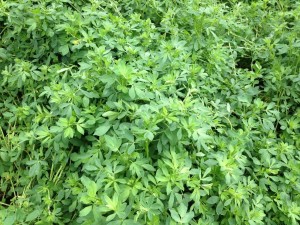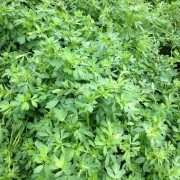Why Does The Analysis of my Alfalfa Test Lower Than Expected?
(Parts of this article are taken from information from Bruce Anderson, UNL Extension Forage Specialist)
Our customers who use PRO CAL 40 on their alfalfa have noticed marked improvement in tonnage and usually quality due to the larger leaf size and less hollow stem. However, sometimes customers ask us why their alfalfa tests don’t have as high of relative feed value as expected given the alfalfa was put up timely and without any rain on it. The comments following taken from Bruce Anderson’s forage newsletter may help explain and give us some management tips to improve the quality of our alfalfa hay.
There are several reasons for the low test values. The biggest problem during summer is high temperatures during growth, especially high night time temperatures along with high humidity. This often produces alfalfa hay with fine stems that contains high protein, but the alfalfa also has high fiber and low relative feed value.
Another problem is slow drydown, especially if it takes a long time right after cutting for hay to dry down to less than fifty percent moisture. As long as hay stays above around fifty percent moisture, plant cells will continue to respire, burning away valuable nutrients. Sometimes cutting hay too late in the day for it to get very dry before nightfall will allow plant cells to respire all night long. Or, cloudy, cool weather will slow drying rate. And this year, high humidity hurt, too.
A similar loss in nutrients can occur after hay is baled. This happens most commonly if hay is baled just a little tough and weather conditions after baling are cloudy and humid. Then the hay may cure slowly for a long time, especially in big bales, but bale temperatures elevate only slightly, not hot enough to show obvious heat damage and discoloration.
Getting high quality hay is challenging. Both you and the weather must cooperate and even then, there are no guarantees.





